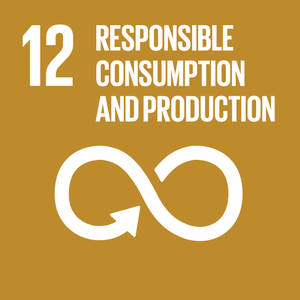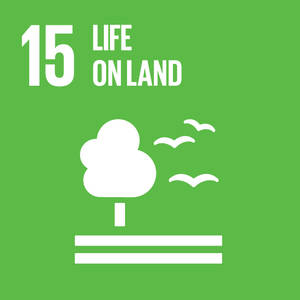Acknowledging that planted forests are established for different management objectives and produce a wide variety of products and services, this module provides more detailed information on the requirements for successful establishment and management of planted forests for wood production and environmental protection. It also offers links to other specialised modules in this toolbox, useful tools for forest managers, a range of case studies from different parts of the world, and some important reference materials.
Planted forests are forests predominantly established by planting seedlings or seeds; plantations are a type of planted forest that is characterized by a composition of one or two tree species, regularly spaced, with intensive management (FAO, 2018). In 2020, the global planted forest area was estimated at 294 million hectares (ha), which is seven percent of the world forest area. Of this area, 131 million hectares were plantation, or about 45% of the total planted forest area (FAO, 2020).
Planted forests are managed at scales large and small and for a variety of objectives, including restoration of amenity, environmental protection, biodiversity, carbon sequestration, and wood and non-wood product generation (Bauhus, van der Meer and Kanninen, 2010; Evans, 2009; Lamb, 2011; Stanturf, Palik and Dumroese, 2014). Sustainably managed planted forests have the potential to provide important social and environmental benefits (FAO, 2010). To realize these benefits it is important that plantations are responsibly managed using best practices (FAO, 2006).
Plantations for wood production
Plantations are increasingly seen as representing one end of a gradient of forest management intensification. This is in line with trends towards sustainable intensification in forestry in order to meet the needs for timber and fibre-based products (Silva, Freer-Smith and Madsen, 2019). In most cases, plantations are established with the objective of producing timber, and are capable of producing a wide range of wood-based products including sawlogs, pulplogs and biomass for fuel. In 2014, 45% of industrial round wood was produced from planted forests (Jürgensen, Kollert and Lebedys, 2014). In many cases, large forest plantation estates are planned and managed by professional foresters with a high level of forest education. These are often complemented by plantations established by smaller landowners who also supply timber to the same processing facilities. However, in some countries (including India, Vietnam and Indonesia) small (<100 ha) and very small (<10 ha) plantations are an important component of the total plantation area (Midgley, Stevens and Arnold, 2017). Owners of small plantations may receive or buy improved planting material from government extension agents, large companies, or cooperatives. Sometimes they sell their crop when mature to large companies or cooperatives with enough scale to afford mills and other processing facilities. This model may be particularly useful for these smaller forest owners with limited financial capacity and formal forestry training.
Improving rural livelihoods is another common goal of forest plantations. Forest plantations can be a source of employment to communities living around large scale forest estates, and can provide significant opportunities to address gender inequity by providing a range of different types of employment for families. Plantations also offer opportunities for entrepreneurs and families who establish and manage their own plantations on their farms, or supply goods and services such as the sale of seedlings to plantation owners. On the other hand, forestry can be hazardous and requires good practice to ensure the safety and health of forestry workers (ILO, 1998).
Planted forests for protection and production of ecosystem services
While many planted forests are established for the sole purpose of timber production, well-designed and -managed planted forests can also deliver a suite of ecosystem services (Bauhus, van der Meer and Kanninen, 2010). When properly managed, planted forests can improve the quality of water yielded by a catchment or watershed, protect soil, and buffer against floods and extreme weather events. Planted forests can also complement the biodiversity values of natural forest, for example by acting as a wildlife corridor and as a supplemental habitat and food source.
There are many cases where planted trees are included in the agricultural system for other purposes, including soil enrichment, soil stabilisation and provision of shade. Even where timber is the main crop, there are cases where agricultural crops form a part of the early development phase of the plantation until canopy closure occurs (i.e. taungya systems) or as a field level crop (e.g. turmeric, indigo, pepper, coffee) after canopy closure. In agroforestry situations the trees are usually more widely spaced than in pure stands.
In addition to production of wood and non-wood products, planted forests also have the potential to absorb large quantities of carbon from the atmosphere and to lay it down in their wood. If managed using best practice, reforestation and forest restoration in previously forested areas can be effective for climate change mitigation (see the 2020 IPCC special report on climate change and land, page 27). The long-term effectiveness of planted forests as a carbon sink, however, is strongly dependent on the length of the rotation and the destination of the timber produced, and the land use that preceded the planted forest. Timber used in buildings instead may sequester carbon for decades to centuries and replace carbon-intensive materials like steel and concrete; whereas timber used for biomass energy or pulp products may only sequester carbon for months to years (Oliver et al., 2014). Where plantations are established by replacing forests or other long established natural vegetation, the short-term release of carbon during establishment must be balanced against the longer-term sequestration in the timber; in some cases the carbon balance remains unfavourable for decades.
Enabling conditions for the establishment of planted forests
As a long-term investment (i.e. years to decades) with the potential to provide multiple goods and services to people and the environment, it is important to have a robust governance and management framework in place to foster and sustain investment in planted forests (FAO, 2010). Secure land and tree tenure for those who invest their time and money to establish plantations are therefore prerequisites for plantations, as well as financial planning to fund tending and protection of the investment. There are well-established silvicultural and landscape management approaches to strike a balance between the different goods and services of planted forest (see e.g. Carnus et al., 2006; Stanturf, Palik and Dumroese, 2014). Prerequisites for their implementation are clear and long-term management objectives for the planted forest, and stable management over the plantation lifecycle.




